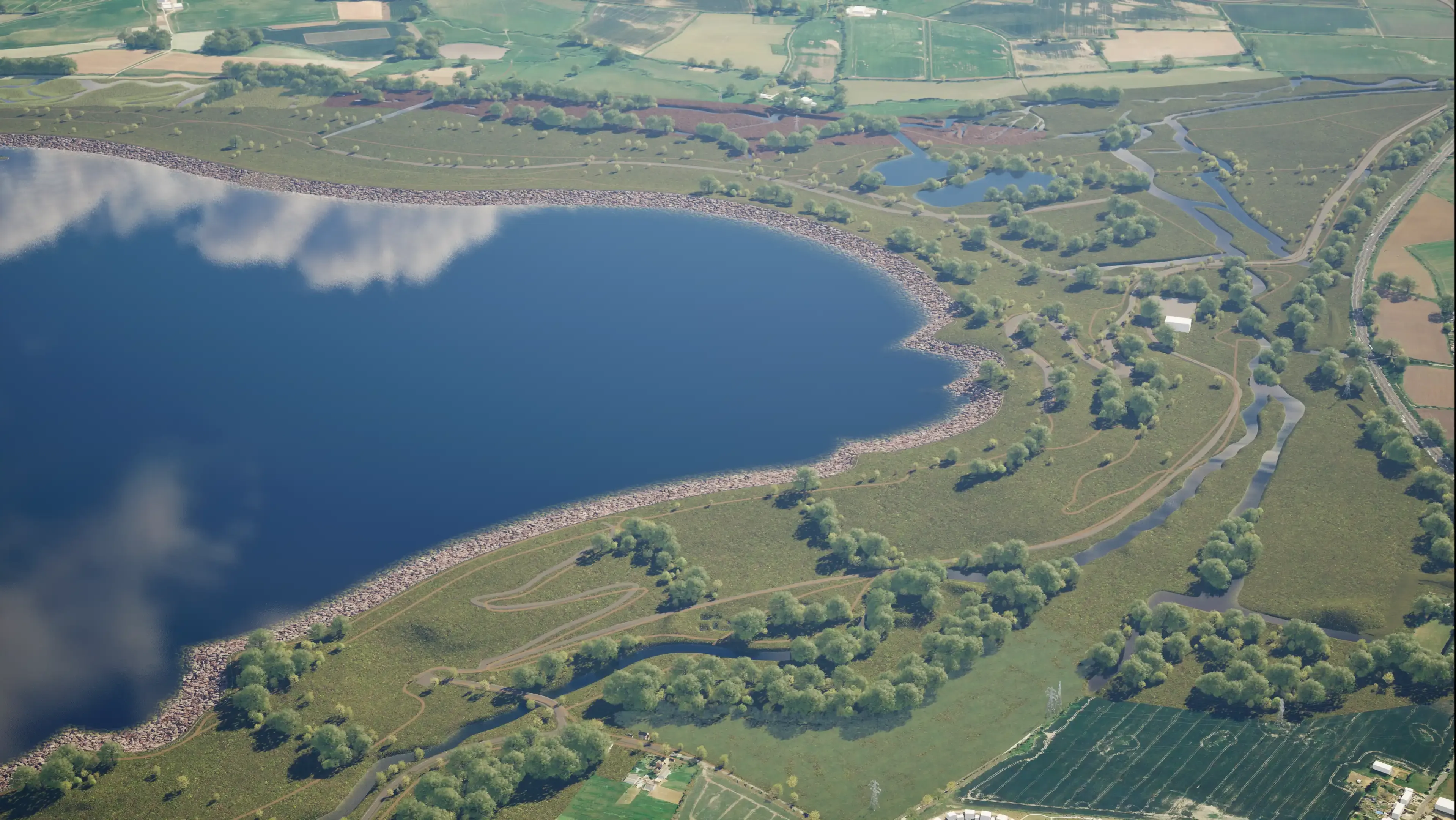
South East Strategic Reservoir Option (SESRO)
A new reservoir for the South East.
We’re developing proposals for a vital new drought resilience project for London.
We're making a series of design changes to the Teddington Direct River Abstraction (TDRA) project. This is in response to feedback received during the public consultation on site options held in autumn 2023.
The overarching objective of the project remains, we must plan ahead to tackle London’s water supply shortage and to ensure we are prepared for the impending risk of drought.
Over 2,000 people took the time to respond to our autumn 2023 public consultation and we are grateful for their input. We're now focused on developing our revised proposals and will present this information, along with our formal response to the public consultation feedback, later this summer.
A programme of community information events will also take place in autumn 2024, and we look forward to the opportunity to meet in person to discuss our proposed amendments.
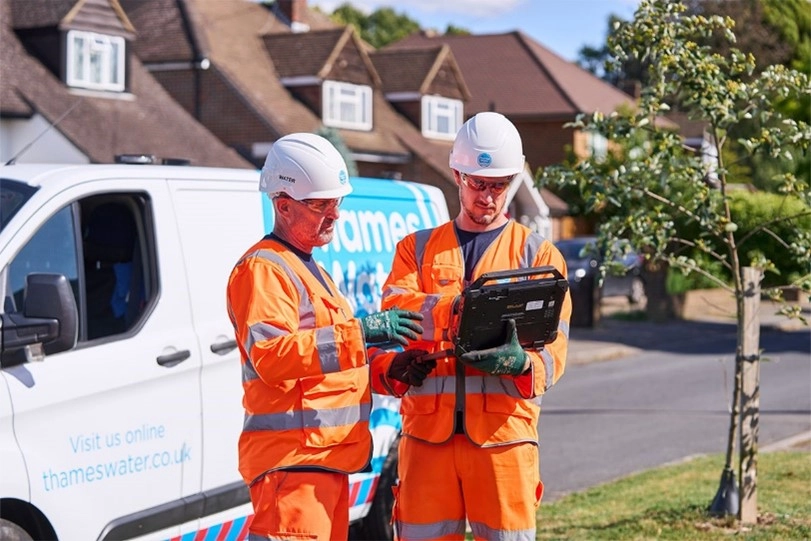
We're in the process of finalising several key changes, including:
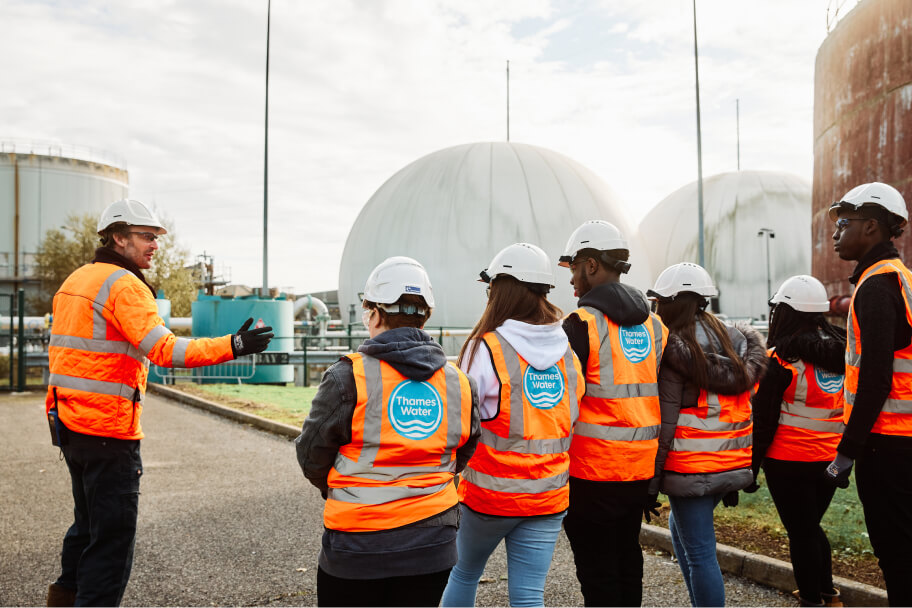
A single intermediate shaft is still required – the preferred location is off Ham Street; and two options also remain under investigation for the Thames Lee Tunnel Connection.
We’re now focusing on these changes to develop a clear explanation of the proposed project. We will be publishing and sharing our updated proposals later this summer, allowing time for you to familiarise yourself with the proposed changes before our community information events begin in the autumn.
Please read the first edition of our newsletter to find out more about our proposed changes and why we need this vital project to help bolster London's ability to withstand and adapt to drought conditions. You can also pick up a printed copy of the newsletter at one of the following locations:
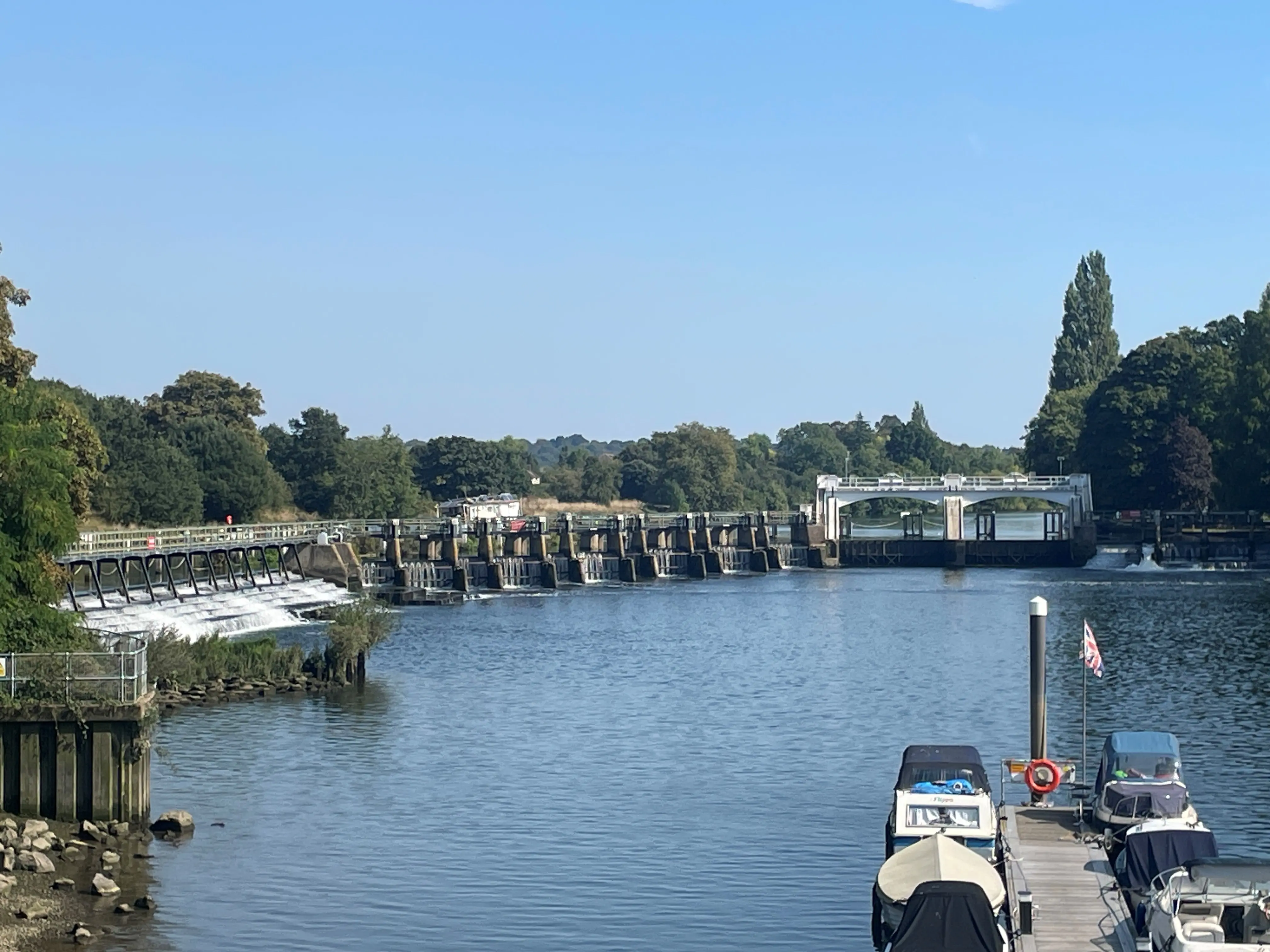
London’s population is forecast to grow to around 12 million by 2050 and the UK is set to experience more extreme heat events.
We need to plan ahead to develop new water supply solutions. One of the vital new projects we’re proposing for London is a new river abstraction on the River Thames. This will ensure a reliable water supply during drought periods for residents, businesses, schools, hospitals and other essential services.
Working with Water Resources South East (WRSE), we’ve identified that the Teddington Direct River Abstraction (TDRA) project is the right solution to help protect London from the risk of drought.
We’re proposing a new river abstraction on the River Thames, supported by water recycling. The Teddington DRA project could provide up to 75 million litres of water each day during periods of prolonged dry weather.

Water would be abstracted from the river upstream of Teddington Weir and transferred along a section of new connecting pipeline to an existing underground tunnel to our reservoirs to become drinking water.
The abstracted water would be replaced with recycled water from Mogden Sewage Treatment Works in Isleworth, transferred to the river along a new underground pipeline to an outfall structure upstream of Teddington Weir. This way, we’d be able to access additional supplies of water from the river, while ensuring river levels are maintained and the river environment and ecology protected.
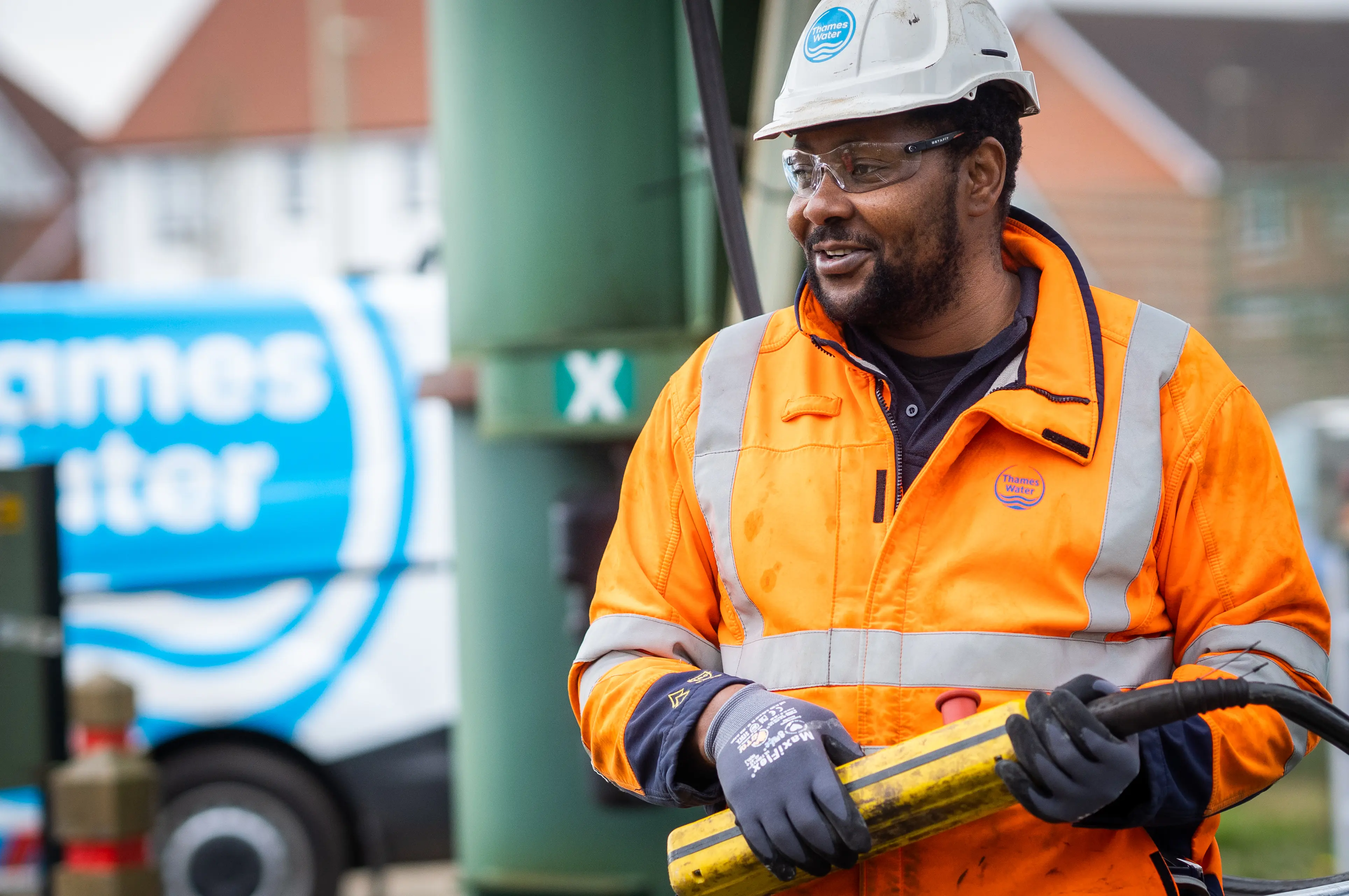
At the heart of this project is the use of water recycling, a tried-and-tested method. Rainwater flows into our lakes, rivers, and streams, as well as being absorbed into the ground. We abstract water from rivers and groundwater sources and treat it in our water treatment works to turn it into top-quality drinking water. We pump that to your taps via our network of 20,000 miles of water pipes. Once water’s been used, we call it wastewater. It goes down your drain or plughole into our network of sewer pipes. These lead to our sewage treatment works, where we treat the water until it’s clean enough to go back into the rivers.
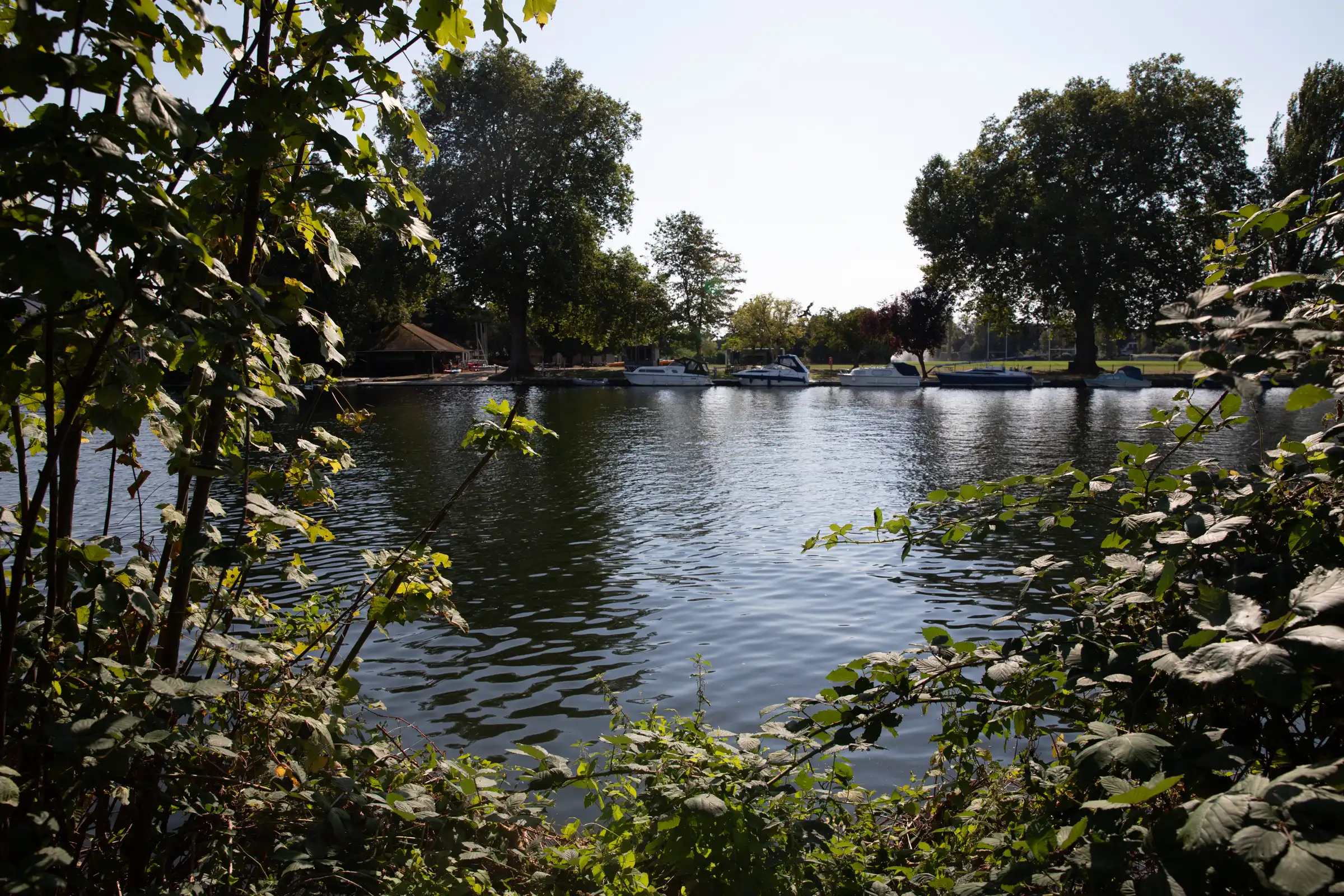
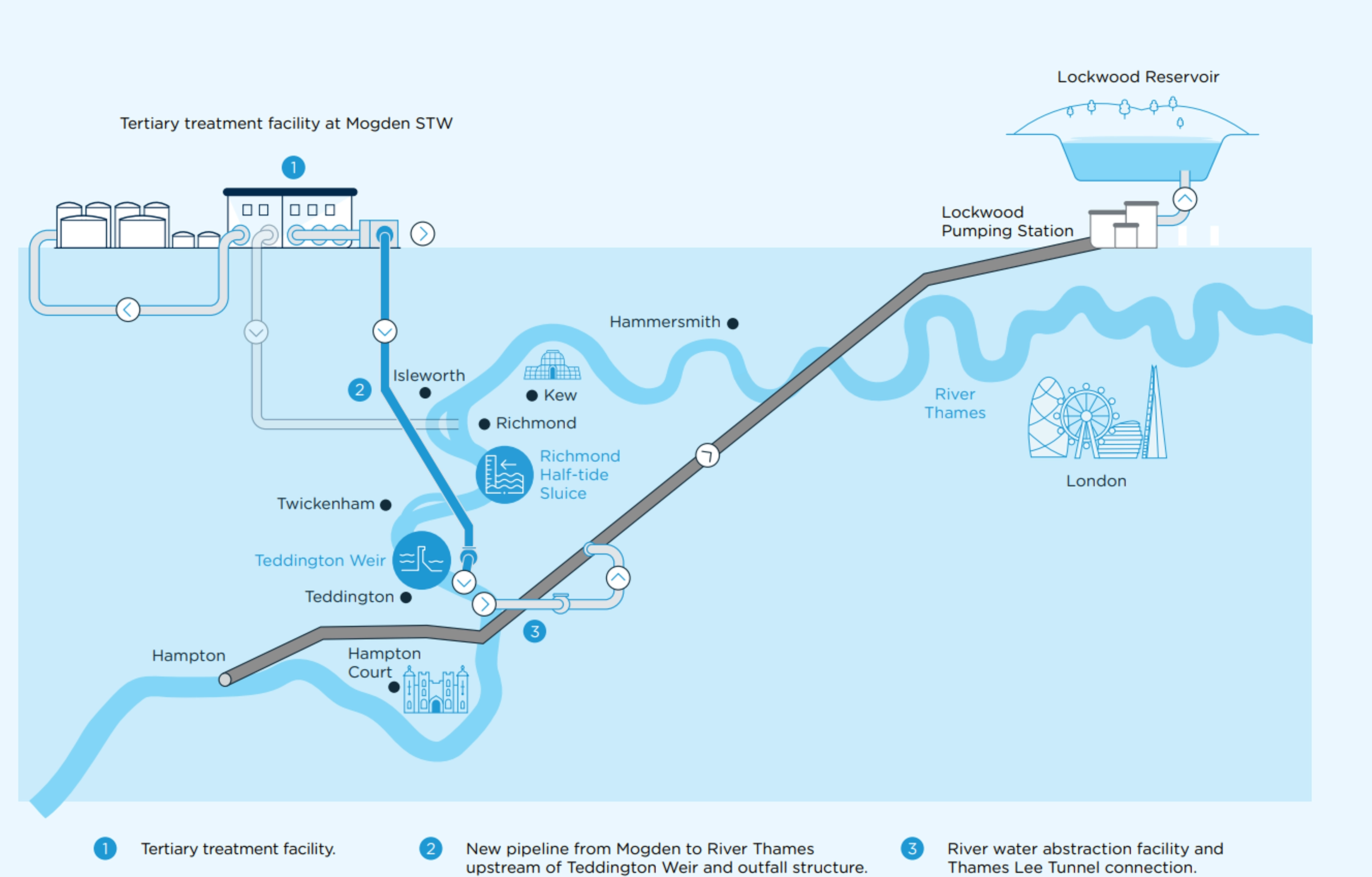
There would be rules governing when the project could be used. We’d only use it during periods of prolonged dry weather, typically between late summer and late autumn, on an intermittent basis. In order to keep the treatment facility in good working order at other times, we’d need to run water through it, at a low volume, called a “sweetening flow”.
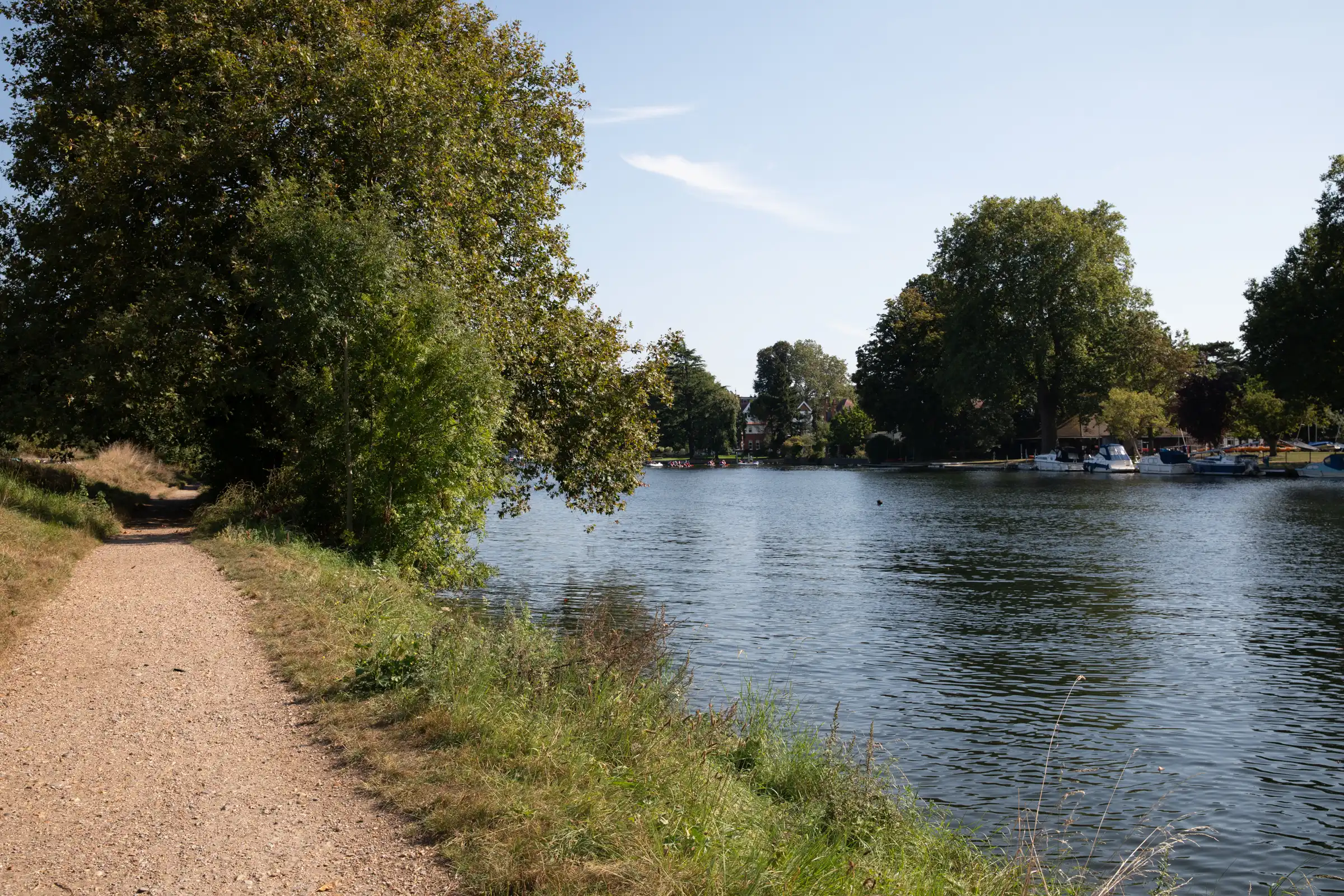
Over the next couple of years, reflecting on feedback that we receive during our engagement and public consultations, we’ll be developing designs for the proposed tertiary treatment facility, new pipelines and shafts, and intake and outfall structures.
Our proposals for the TDRA project are overseen by RAPID (Regulators’ Alliance for Progressing Infrastructure Development), a consortium of water industry regulators. RAPID has implemented a ‘gated’ regulatory process to ensure that all new strategic water supply options are considered in a fair, consistent and transparent way, and that our customers’ money is spent wisely.
More information about RAPID and the gated process can be found here, where you will also find the technical reports, additional information provided to RAPID and feedback from RAPID relating to the project.
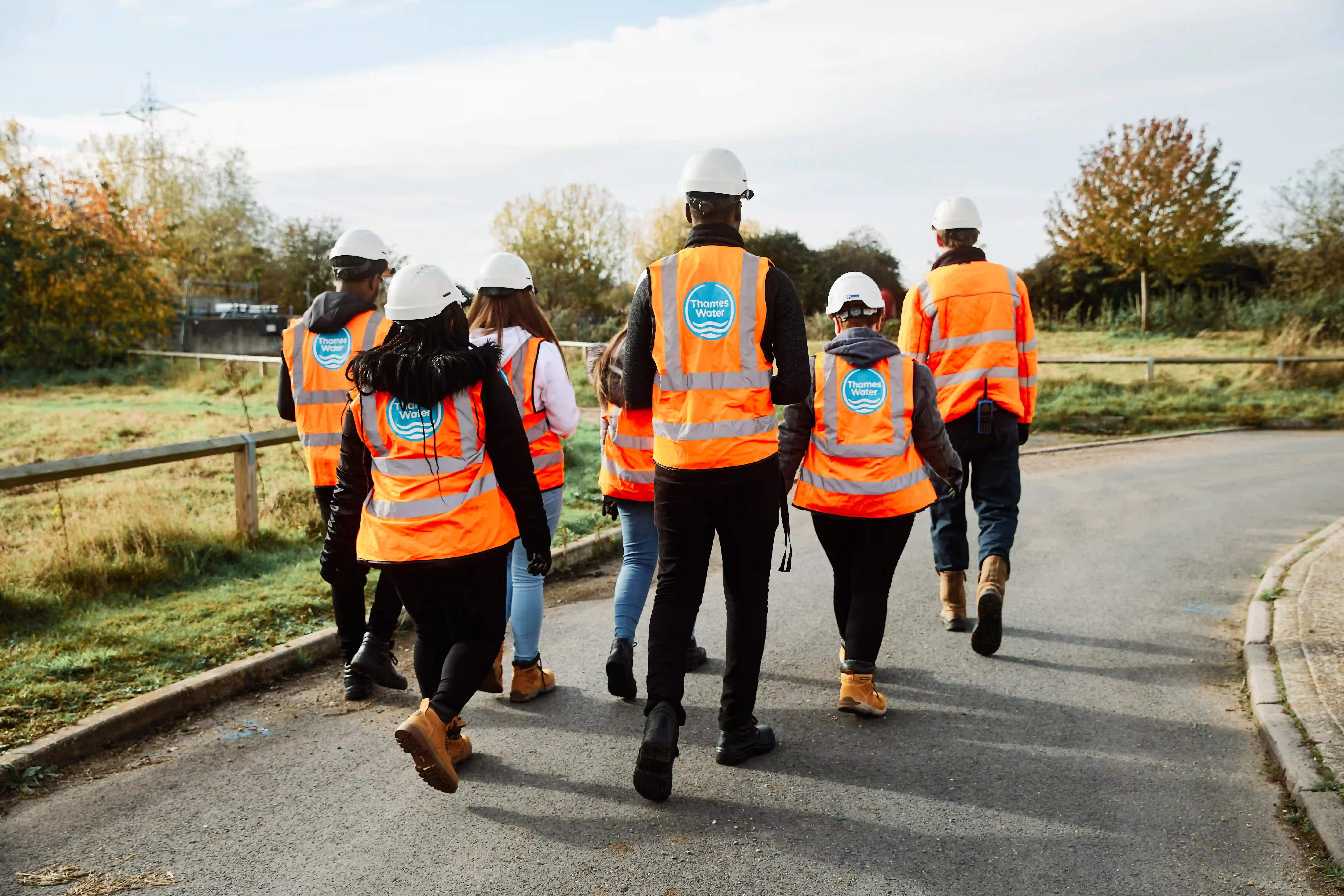
In December 2023, the Secretary of State confirmed that the TDRA project should be treated as a development of national significance for which a Development Consent Order (DCO) is required. Details of the Request and the Decision are available on the Defra website.
The DCO process provides opportunities for people to have their say on the proposals before a final decision is made by the Secretary of State. Before formally applying for a DCO, Thames Water must carry out public consultation and consider feedback.
Find out more about the DCO process in our factsheets in the Document Library.
More information is also available on the Planning Inspectorate website.
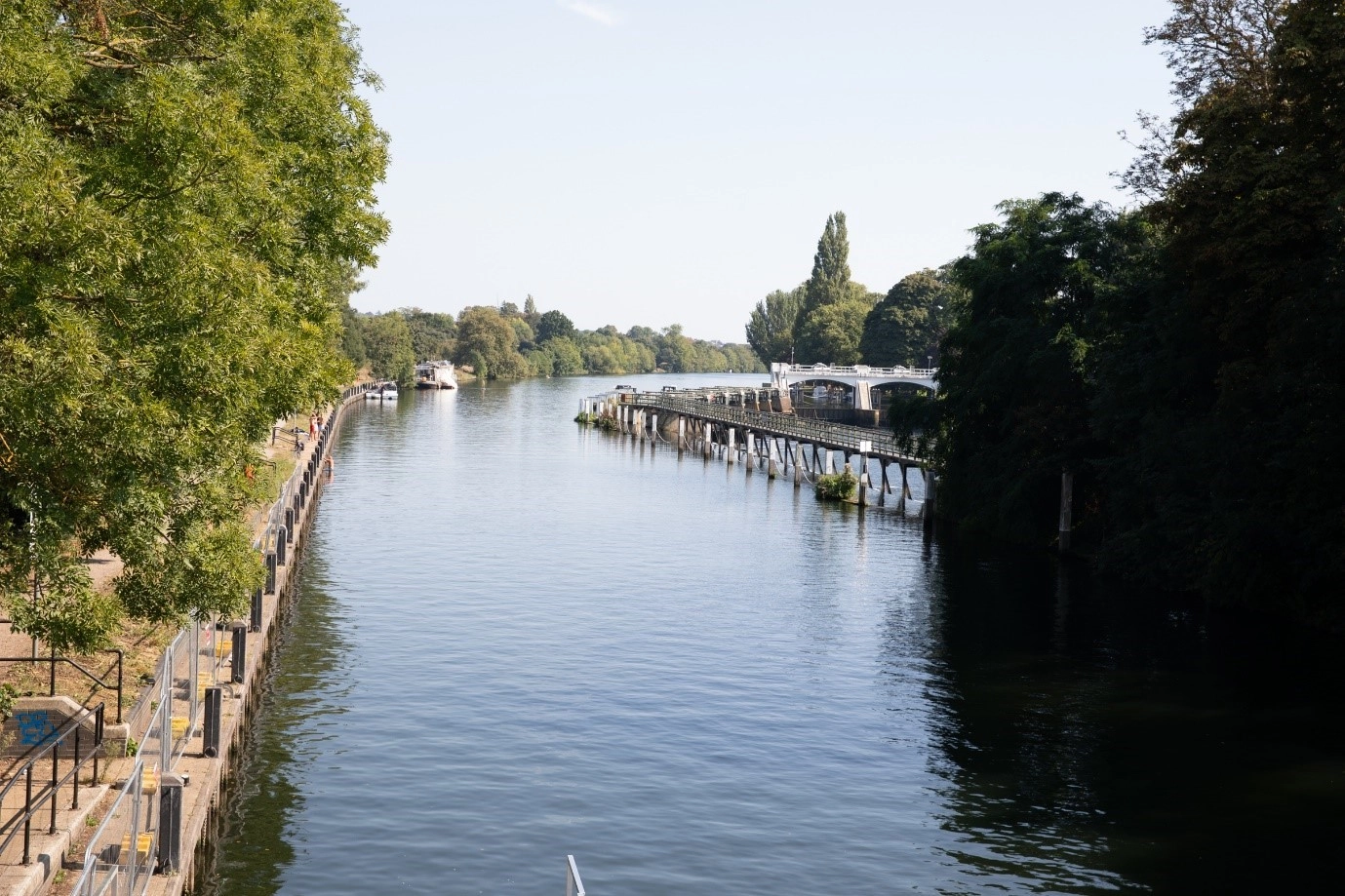
You can find further project information and documents that we published in 2023 during our site options public consultation here.
If you have any questions, please contact us.
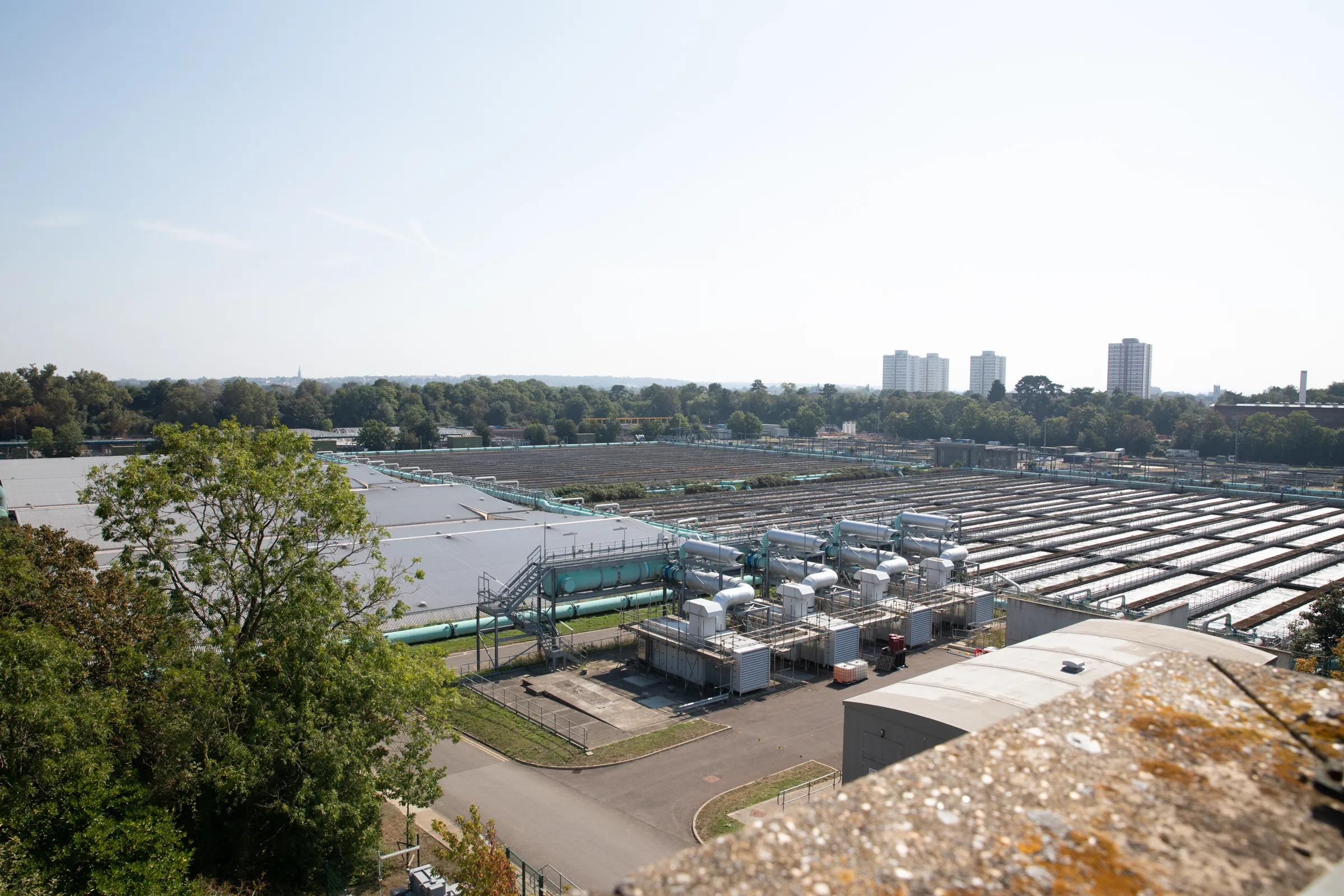

A new reservoir for the South East.
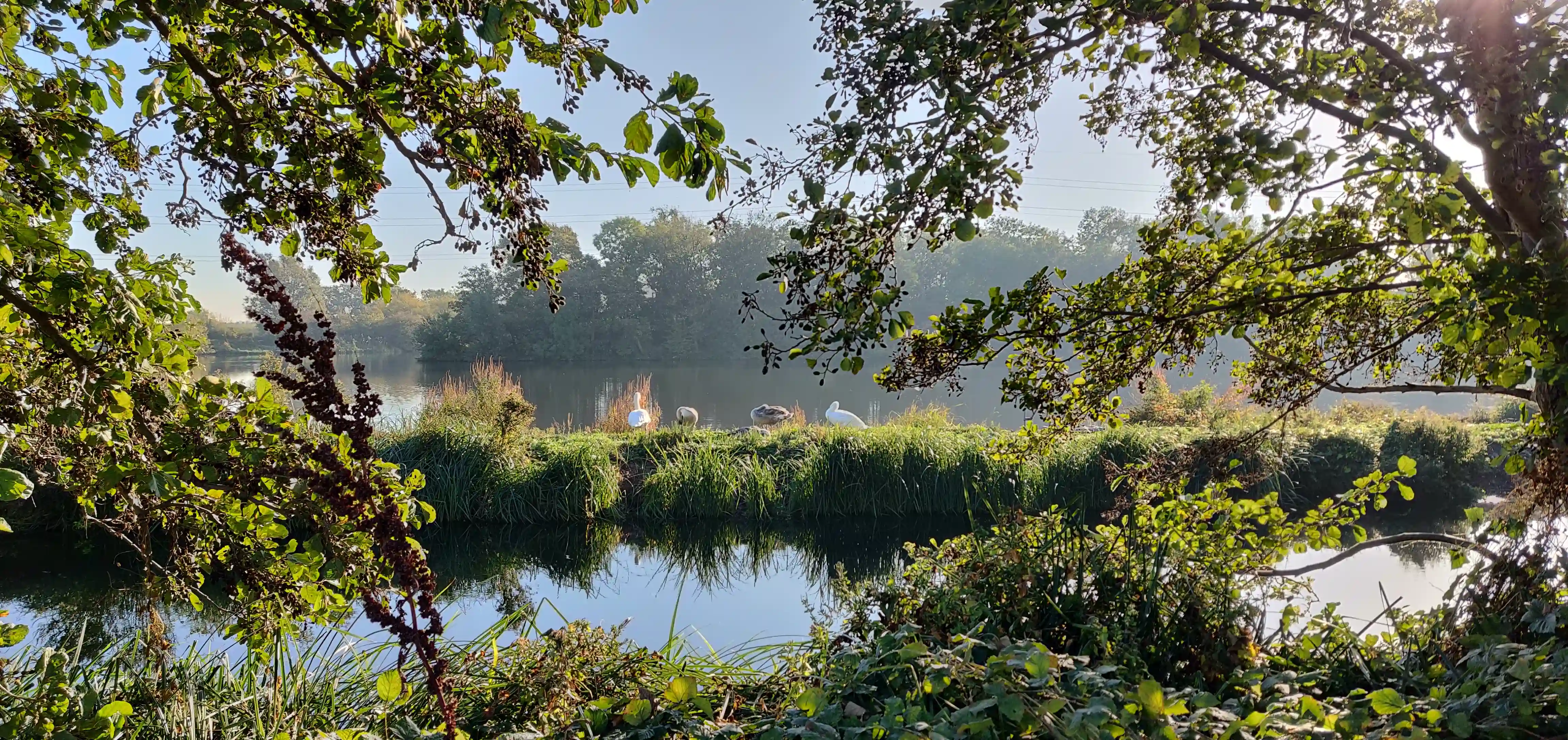
Considering water transfer options.